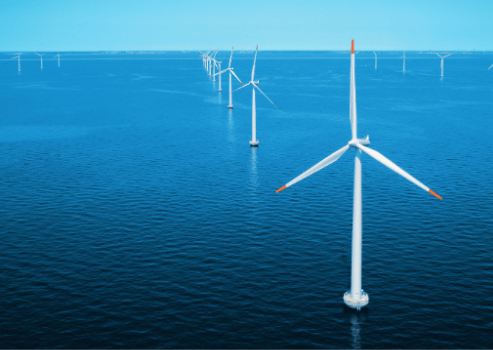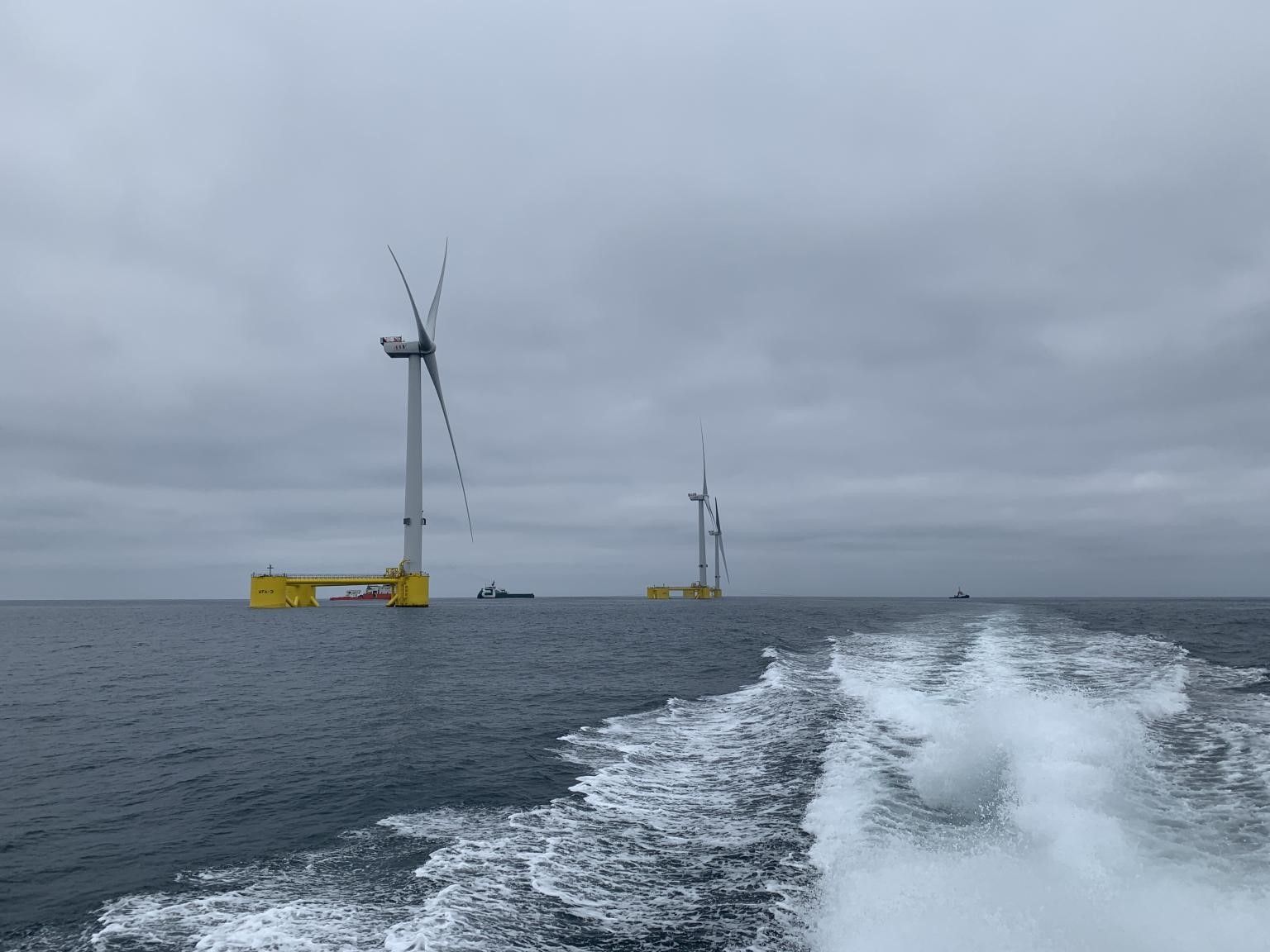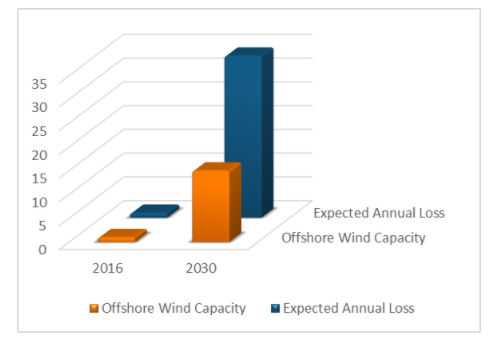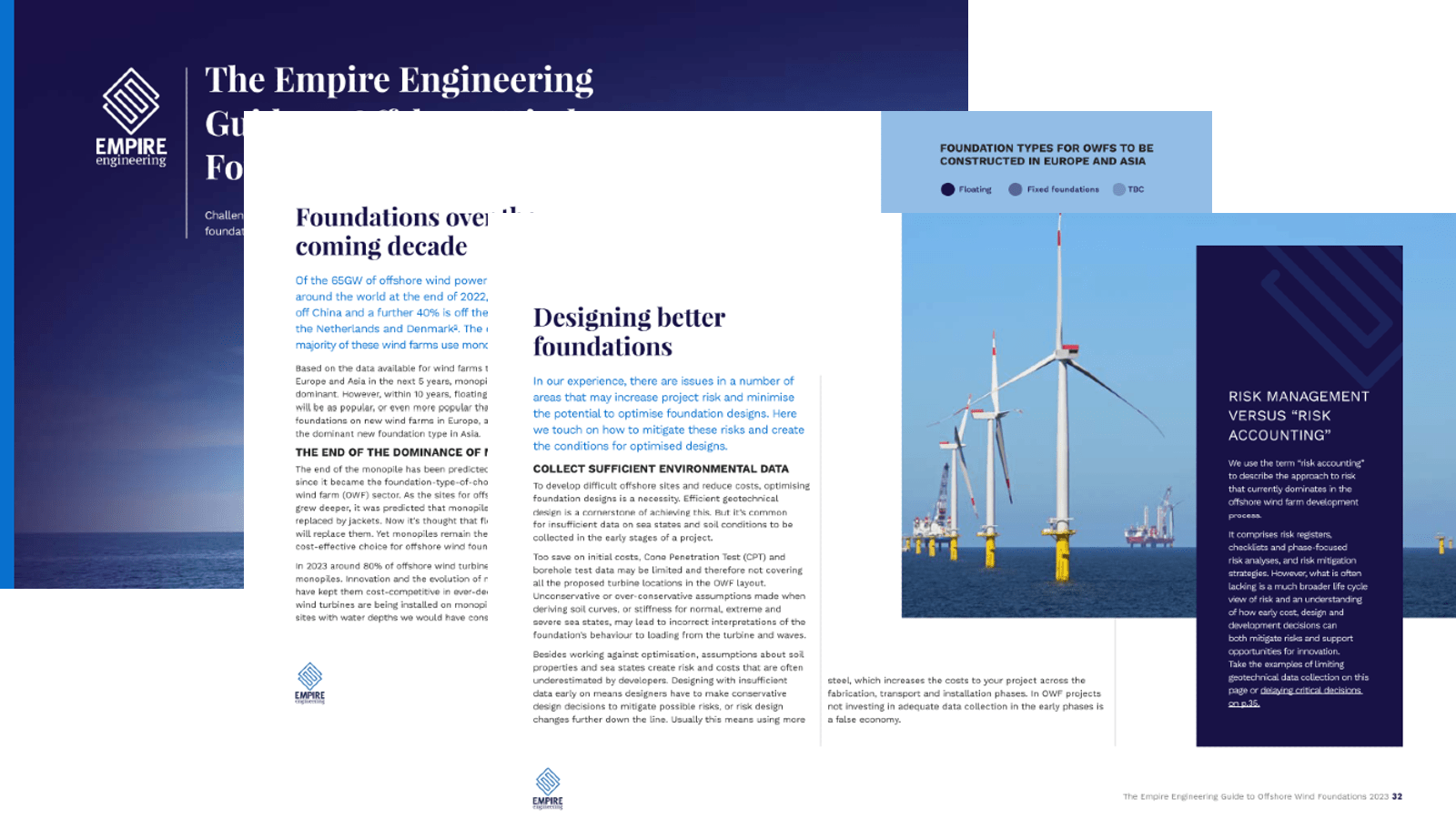By Martin Underlin Østergaard
During recent years, the boundaries for offshore wind turbine foundations have been pushed further than ever before – deeper waters, bigger turbines and larger foundations, especially monopiles, dominate the latest auctions.
To develop increasingly difficult sites to harness the wind resources, the optimization of the foundation structures has become a necessity, and in the hunt for optimized foundation structures, efficient geotechnical design is a cornerstone.
Geotechnical design is complex – and achieving the right amount of conservatism even more so. No one – especially not today – is interested in introducing unnecessary conservatism, but geotechnics is somewhat different than design of concrete or steel. It deals with soil, its natural variation, and the complexity of the interaction between the soil and the foundation under complicated loading scenarios. Soil is not man-made, and geotechnical engineers do not have the chance to alter the circumstances – you work with what you have, and there is limited possibility to improve the soil quality, like improving steel quality from S275 to S355.

How to avoid unnecessary conservatism?
Well, it is about understanding the nature (no pun intended) of the soil.
Geotechnical design aims to ensure that loads on the foundation structure can be safely transferred to the surrounding soil volume. This includes considerations of soil capacity, deflection and rotation of the foundation, dynamic interaction between the foundation structure and the surrounding soil as well as foundation installation as per governing standards. Each of these evaluations require a unique methodology and a corresponding understanding of the soil behaviour.
Understanding the soil behaviour is very much connected to the understanding of the physics involved in the evaluation. The properties of soil span a range – sometimes narrow, sometimes wide. Soil is mostly heterogeneous and it often acts anisotropic when loaded. It can be pre-loaded or in a virgin state, and the response might also differ for various loading velocities. Soil can harden or soften, it can be brittle or ductile, and the capacity can reduce to more or less nothing within a short span of time during earthquake events.
Regardless of your type of evaluation, you probably start looking at the low end of the range of soil properties. This is a typical approach, as it provides you with a set of low soil properties, usually resulting in a conservative design. However, you need to understand the variation and origin of the data you are examining.
Understanding the soil data
Really, you should be asking yourself the following questions:
- Is the lower end of the parameter range dominated by outliers in your data set?
- Is a certain data type dominating in this end of the range – and if yes, why?
Acquiring soil data is not straightforward, and you always need to pay attention to your data source. Certain methods of acquiring data are better suited for informing on certain soil parameters. Generally, you should distinguish between data originating from in-situ testing and laboratory testing – and between small (unit) scale and large (volume) scale.
A Cone Penetration Test (CPT) is a small scale in-situ test that is conducted by pressing a metal cone vertically through the soil, usually at speeds around 2 cm/s. As the metal cone progresses, characteristics such as pressure on the tip, friction on the side and water pressure on the metal cone are measured. The CPT is relatively cheap (compared to other types of geotechnical testing, such as borehole sampling), and it is performed in-situ, which reduces the disturbance of the soil. For these reasons (amongst others), the CPT is a common way to investigate the soil properties.
Nowadays, you can estimate most soil characteristics using correlations based on continuous CPT data as several of these have been developed for common soil types over the years. But you need to acknowledge that it is nothing than more than that – a correlation. Often based on vast amount of data, but a correlation nonetheless.
Talk with a specialist
We've been a part of some of the worlds most exciting and
complicated projects in offshore wind.
If you need more eyes, brains and hands, we're ready to help.
Understanding your design drivers
Your design drivers will vary from project to project – and most likely also within the same project from one foundation to the next. Understanding what governs your specific design is key to ensuring that the most relevant soil characteristics are estimated in the most accurate way.
What if your governing design criterion is associated
with the dynamic response of the foundation?
In this case, what would be governing the soil behaviour and what would be the most appropriate set of the soil parameters to describe this behaviour? And how would you acquire the data to allow for estimating these?
Chances are that you would be able to get what (you think) you need from the CPT. However, you might be better off supplementing your traditional CPT’s with a seismic CPT to determine the small-strain volumetric shear properties of the soil and use that as input to your analysis. This would more truthfully inform on the soil behaviour which governs this specific design problem.
There is a distinct link between the problem you want to solve, the characteristics of the soil that govern this problem, and the methods used to inform on these characteristics. The importance of this link must not be forgotten nor underestimated and finding the right approach is crucial to obtain optimized foundation structures based on efficient geotechnical design.
Conservatism is not always about choosing the lowest numbers
It is about choosing the most appropriate numbers and accounting for the inherent variation, given a set of complex circumstances. It is about managing the risk of your design by understanding the physics governing your design problems.
Finally, it is about appreciating the link between initial planning of the soil investigations, proper understanding of the soil behaviour and variation, and the most appropriate design considerations and methods.
To find out more, please get in touch with the team at Empire Engineering.




